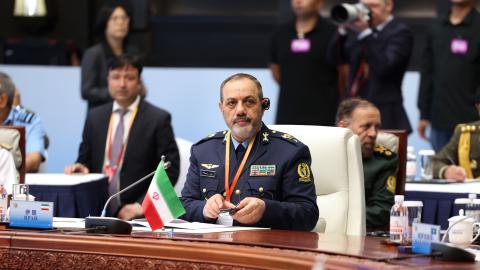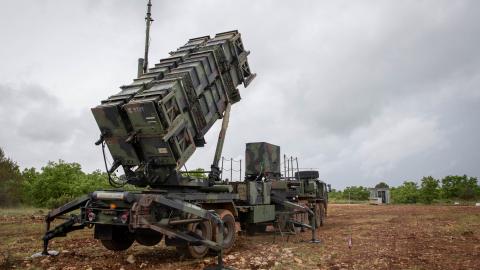US Secretary of State Antony Blinken this week visited Kazakhstan and Uzbekistan en route to the G20 meeting in India. Secretary Blinken’s visit to Central Asia was the first by a US Cabinet-level secretary since Mike Pompeo visited the region in February 2020. In addition to meeting with his Kazakh and Uzbek counterparts, Blinken also took part in a meeting of the C5+1.
The C5+1 is an annual meeting of the five Central Asian republics (Kazakhstan, Kyrgyzstan, Tajikistan, Turkmenistan and Uzbekistan) and the US that was started by the Obama administration and continues today. Often this meeting takes place outside Central Asia, on the margins of other major international gatherings like the annual UN General Assembly meeting in New York. Besides offering a useful format for America’s top diplomat to meet with Central Asian counterparts, few practical outcomes have resulted from the C5+1 format in recent years.
Since the emergence of the five new republics after the fall of the Soviet Union in the early 1990s, the US has had a standoffish approach to its engagement with Central Asia. Too often, US relations with the Central Asian republics were built around a single issue that was most relevant at the time. For example, in the early 1990s, the focus of US engagement in Central Asia was built around democracy promotion. In the late 1990s, the focus shifted to energy. After the terrorist attacks of 9/11, US attention in the region was almost exclusively on counterterrorism cooperation. When America did not need access to the region for military basing and overflight rights as the mission in Afghanistan was winding down, there was very little attention at all given to Central Asia by policymakers.
However, since the Taliban takeover of Afghanistan and Russia’s campaign against Ukraine, there is renewed interest by American policymakers in the region. This makes sense. In the era of great power competition, many of the geopolitical challenges the US deals with converge on Central Asia: an imperial Russia, an emboldened China, Iranian meddling, and the rise of extremism.
There is also an important energy component. Kazakhstan, Turkmenistan and, to a lesser extent, Uzbekistan could play an important role in helping Europe achieve energy independence away from Russian and Iranian oil and gas. If infrastructure investments are made, and political will is found, new pipeline systems could be built connecting Central Asia to Europe.
The situation in Afghanistan is also an important factor for the US in the region. Now that Washington has no military or diplomatic presence in Afghanistan, it is becoming increasingly reliant on engagement with neighboring countries such as Uzbekistan and Tajikistan. Meanwhile, transnational terrorist groups are now freely operating in Afghanistan in a way not seen since the 1990s.
The lack of US engagement in recent years has left policymakers with few options in Central Asia. However, there are some things that can be done immediately to build on Blinken’s trip to help get the US relationship with the Central Asian republics back on track.
Firstly, it is time for an American president to visit the region. Considering the geopolitical importance of the region, it is unbelievable that no sitting American president has visited any Central Asian republic. Meanwhile, the leaders of Russia, China and Iran routinely visit the region and meet with their counterparts.
Secondly, the US needs to develop a new Central Asia strategy. The last one was published in February 2020 but is already outdated. Even though this policy document was, at the time, billed as a Central Asia strategy, it was predominantly focused on Afghanistan. Obviously, the region has changed drastically since 2020. The US was defeated in Afghanistan, Russia is weaker because of its invasion of Ukraine, the COVID-19 pandemic altered the global economy, Turkey’s influence in the region is on the rise and China’s influence is also growing. The US needs a new guiding policy document for the region.
Finally, US policymakers need to take a longer-term approach to building relations with the Central Asian republics. US engagement in the region has been transactional. For example, access to a military base might mean tens of millions of dollars in American foreign aid. Washington missed an opportunity after 9/11 to jettison the transactional framework of US engagement in the region. This needs to be replaced with a more enduring approach that allows America’s relations with the Central Asian republics to weather the ups and downs of geopolitics.
In the aftermath of America’s handling of Afghanistan, many in Central Asia do not trust the US and Washington has not put in the required legwork over the years to keep close relations. Secretary Blinken’s visit to Central Asia was positive but long overdue. Unless there is newfound momentum to build on the visit, it will likely prove to be too little, too late.
















![Secretary of State Antony J. Blinken meets with Acting Foreign Minister Bakhtiyor Saidov in Tashkent, Uzbekistan, on March 1, 2023. [State Department photo by Chuck Kennedy/ Public Domain]](/sites/default/files/styles/16_9_sm/public/2023-03/03.03.2023%20Coffey%20Arab%20News.jpg?h=1c9b88c9&itok=Jr6msPP4)